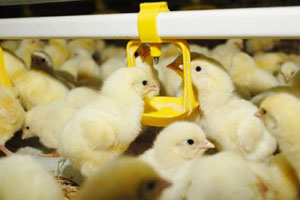Probiotic to combat C perfringens in poultry

Researchers have characterised the coating of a potential probiotic with the hope of explaining why it excludes pathogenic bacteria from poultry.
In a paper published in The Journal of Biolological Chemistry, scientists from the Institute of Food Research analysed the coating of Lactobacillus johnsonii – known to outcompete Clostridium perfringens in the guts of poultry, a cause of food poisoning in humans, from the guts of chickens. It was described as the “first step” to understanding exactly how this competitive exclusion works.
Using NMR spectroscopy, the researchers discovered that the coat is made up of two types of exopolysaccharides (EPS), which are long sugar-containing molecules that many bacteria use to encapsulate themselves. This capsule may help the bacteria to cope with environmental stress, or aid colonisation and adhesion, said researchers. It is believed that the two strains of EPS that form the capsule are unique to L johnsonii.
This strain of L johnsonii is now being taken through farm-scale trials to assess its potential use to combat pathogenic infections of poultry by bacteria such as C perfringens. Further work will focus on unpicking how the EPS molecules in the coat contribute to colonisation and pathogen exclusion.













